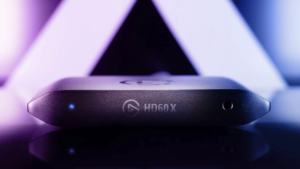AMD expects a ‘strong ramp’ second half of 2020 thanks to launch of PS5 and Xbox Scarlett

Comments
AMD is gearing up for a strong 2020 thanks to the arrival of the next-gen consoles. CEO Lisa Su followed up Team Red’s recent fiscal results with a discussion on the upcoming consoles, both of which feature AMD Radeon and Zen hardware.
Su expects AMD to have a very strong second half of 2020 due to the expected launch of Sony’s PlayStation 5 and Microsoft’s ‘Project Scarlett’. While the final specs have yet to be publicised, it’s expected both consoles will use a variant of AMD’s 7nm Navi GPUs with RDNA architecture, as well as a Zen 2 processor. Sony has confirmed the PS5 will have an 8 Core / 16 Thread Zen 2 CPU.
“The console business is a great business for us,” said Su during a chat with GamesBeat. “We’re very happy to be in the next-generation Sony and Microsoft consoles for 2020. We’re going through a product transition at the moment. Most of the energies have turned to the new consoles. But our expectation is that as this generation ramps down, we’ll have a strong ramp to the next generation, particularly as we go into the second half of 2020.”
AMD hardware is already used in both the Xbox One and the PlayStation 4, accounting for around 150 million hardware sales. Just to top it off, AMD hardware is also used for Google Stadia’s cloud machines, meaning racks and racks of AMD Radeon graphics cards. The pay-off there is going to hinge on whether Stadia can actually crack the market or not. Meanwhile Nvidia hardware can be found in the Nintendo Switch, which itself is probably a nice little earner for Team Green due to its booming success.
While it can be difficult to gauge precise numbers, both Microsoft and Sony are likely to be prepping orders for millions of units of AMD hardware in the run-up to both consoles’ holiday 2020 launches. AMD’s plans don’t end there though. It’s not just the PS5 and Xbox Scarlett where they want to see AMD hardware – AMD wants its hardware everywhere.
“The way to think about it, we want Radeon graphics to be everywhere,” Su went on to say. “Everywhere means in the datacenter, in gaming, in PCs, in consoles, as well as in mobile. Samsung, as our partner in graphics — it’s both a licensing opportunity, as well as a development opportunity, where we’re jointly optimizing our Radeon graphics for lower-power applications. Again, it’s one of these areas where having the architecture span across all those product segments is a good thing for developers and a good thing for the architecture.”
AMD’s upward trend continues despite being comparatively slow to flesh out its desktop 7nm graphics chips this year. There’s a feeling that once the 7nm process matures we could have quite a force on our hands. AMD’s already flexed its muscles impressively in the CPU market, with notable gains on Intel, and all eyes are now on what AMD Radeon goodies are going to be cooked up next.
Source







